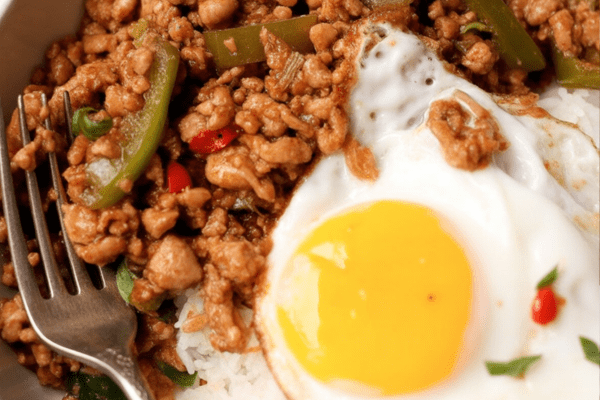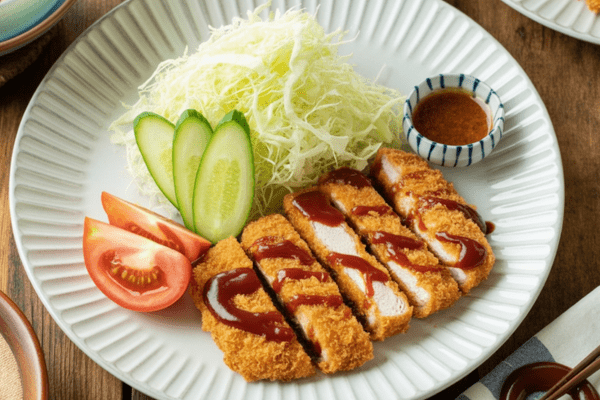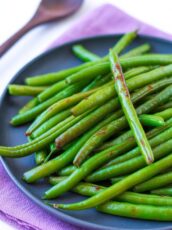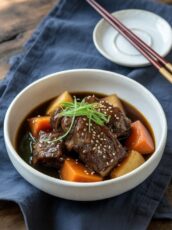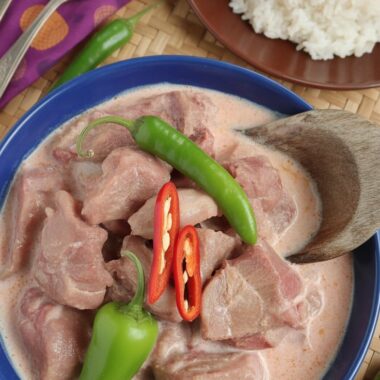This is one of those back-pocket sauces I can’t live without. It comes together in about five minutes (no kidding), yet it makes anything taste like you fussed for hours. I first learned to make it after a particularly uninspiring week of eating plain steamed veggies and rice. Now I drizzle it on everything from stir-fried noodles to grilled tofu, even roasted veggies when I want them to feel a little more special.
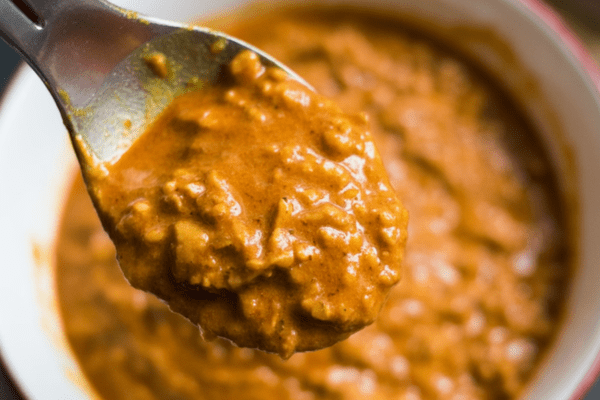
It’s savory, nutty, garlicky, and just the right amount of spicy—basically, it’s the sauce that saves dinner on nights I have zero energy.
What’s Different About This Peanut Sauce
I’ve seen people confuse this with the thicker, slightly sweeter Thai peanut sauce you get with satay skewers. This version is what I grew up making at home for dipping, tossing, or spooning over fried foods.
Think of it like the humble, spicy cousin of Thai peanut sauce. Here’s how I usually describe it to friends:
- Less sugary, more straightforward. I don’t add brown sugar or soy sauce like in Thai-style recipes. It’s a simpler mix of sugar, salt, and acidity from lime or vinegar.
- No coconut milk. Some Thai recipes use coconut milk for richness, but here I keep it lighter and more direct.
- Just-right texture. It shouldn’t pour like water but shouldn’t be stiff either. I like it spoonable—enough to cling to noodles or fried tofu without overwhelming them.
I use it for all sorts of things, but my favorite is as a dipping sauce for fried tempeh. My family can demolish an entire plate if this sauce is on the table.
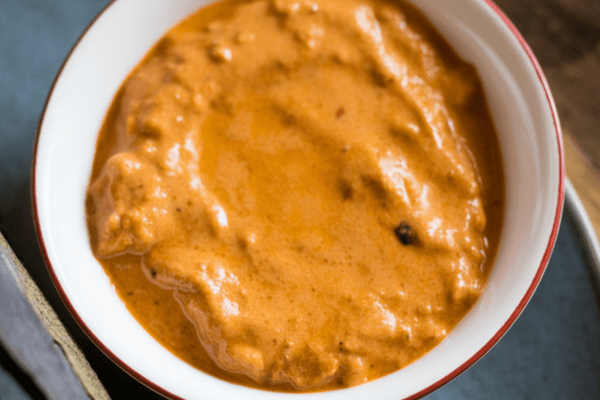
Ingredients You’ll Need (and My Tips)
This is what I usually keep on hand for it:
- Peanuts: I like using roasted, skinless ones. If I’m feeling lazy, I’ll even use store-bought chunky peanut butter (just go easy on the salt). Once, during a road trip, I had to improvise with a single-serve peanut butter packet from a diner. Still worked!
- Garlic: Don’t skip this. It adds that deep, earthy kick. I usually use fresh cloves, but in a pinch, a small spoon of minced garlic from a jar is fine.
- Chilies: I tend to mix cayenne and Thai chilies. I like it hot, but when making it for guests, I tone it down. My advice? Start with a little and add more if you dare.
- Salt and Sugar: Simple pantry staples that wake up the flavors.
- Lime Juice or Vinegar: This acidity balances the richness. I’m partial to fresh lime, but I’ve used rice vinegar too, and it’s great.
- Water: Helps thin it out. I use hot water so it mixes more smoothly.
One thing I love about this recipe is how adaptable it is. You can adjust everything to taste. I often do it right at the table with an extra squeeze of lime if I feel like it needs more brightness.
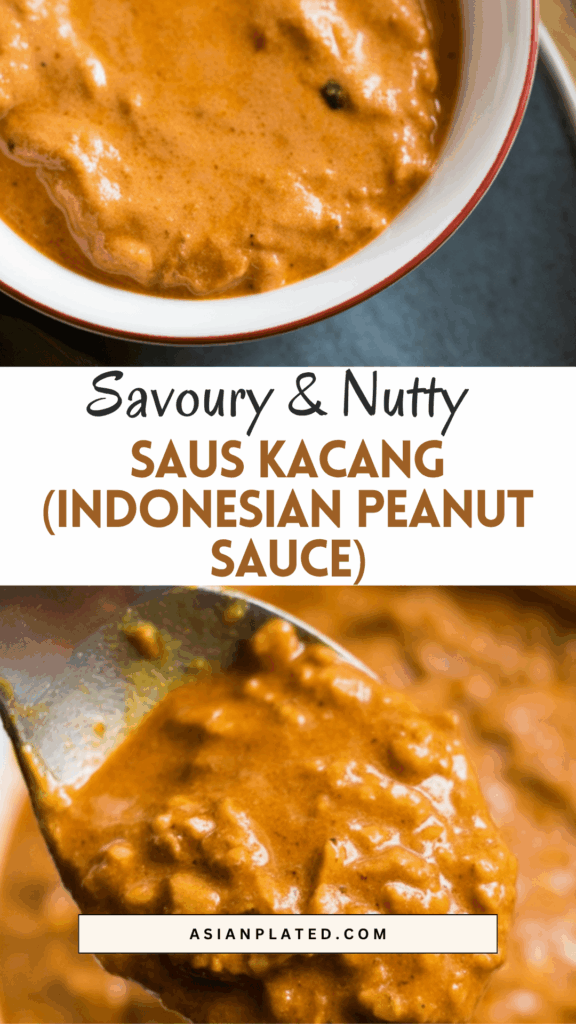
How I Make This in My Kitchen
This is the part I like best—just how forgiving and foolproof it is.
- I throw the peanuts, garlic, and chilies in the food processor. No need to be precious about chopping. Let the machine do the work.
- I add the salt, sugar, lime juice, and hot water. Then blend again until it’s a sauce. If it’s too thick, I splash in more water until it’s just right.
- I taste and tweak. Sometimes I want it more sour or spicier. It’s all about what you’re in the mood for.
One time I didn’t even have a food processor and mashed it with a mortar and pestle. Took longer, but it felt satisfying and very old-school.
Cooking the Sauce (If You Want Extra Depth)
If you’re using raw peanuts, I really recommend toasting them first. I warm a little oil in a pan over medium heat, toss in the peanuts, and stir until they smell nutty and get golden.
This step makes a huge difference—it intensifies the peanut flavor. Then I blend them with the garlic and chilies, add the other ingredients, and gently simmer the sauce on the stove until it bubbles.
I don’t always cook it. Usually, I’m too impatient. But when I do, it feels richer and even more comforting.
How I Store and Use It
I usually keep a jar of this sauce in the fridge for quick meals. It lasts about a week or so—though to be honest, it rarely survives that long in my house.
A few tips from experience:
- Store it in a clean glass jar with a tight lid.
- Before serving, let it warm up to room temperature or give it a quick stir if it’s thickened a bit.
- I love pulling it out when I have leftover rice and stir-fried veggies. A big spoonful of this turns boring leftovers into a dinner I’m actually excited about.
It’s also amazing with fried tofu, spring rolls, or tossed with noodles and some sliced cucumber for a super easy cold noodle salad.
Saus Kacang (Indonesian Peanut Sauce)

If there’s one sauce I keep coming back to in my kitchen, it’s this bold and fiery peanut chili blend.
Ingredients
- 2 cups hot water
- 1 cup peanut butter (creamy or crunchy, your call)
- 5 Thai red chilies
- 2 cloves garlic
- 2 cayenne peppers
- 2 tablespoons sugar
- 1 tablespoon salt
- 2 teaspoons lime juice or vinegar
Instructions
- Start by roughly chopping the garlic and chilies. In a blender or food processor, combine the peanut butter, garlic, cayenne, Thai chilies, sugar, and salt. Pulse until you get a thick, spicy paste.
- Next, pour in the lime juice or vinegar and slowly stream in the hot water while blending, until the sauce is silky and smooth. If it looks a bit too thick for your liking, feel free to splash in more hot water a tablespoon at a time.
- Taste, tweak the seasoning if needed, and that’s it—your homemade sambal kacang is ready to add some serious punch to any dish.
Nutrition Information:
Yield: 1 Serving Size: 1Amount Per Serving: Calories: 1761Total Fat: 130gSaturated Fat: 25gTrans Fat: 0gUnsaturated Fat: 84gCholesterol: 0mgSodium: 7617mgCarbohydrates: 119gFiber: 20gSugar: 57gProtein: 63g
Asianplated.com, occasionally offers nutritional information for recipes contained on this site. This information is provided as a courtesy and is an estimate only. This information comes from online calculators. Although allchickenrecipes.com attempts to provide accurate nutritional information, these figures are only estimates.
If you make this sauce, I hope it becomes one of those reliable recipes you turn to again and again. It’s one of my favorite ways to make dinner more satisfying without spending all night in the kitchen.
Try other recipes:

